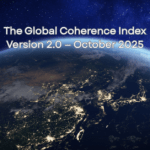The Assassination Attempt on Donald Trump: A Constructivist Perspective on Political Violence
The recent assassination attempt on former President Donald Trump has flooded the news and brings attention to the significant role that ideas and identities have in shaping political behavior. From a Constructivist perspective, this incident highlights how social constructs and narratives surrounding political figures can influence actions and reactions within society.
Get your copy of the ‘Trump Coloring Book of Lies from the 2024 Presidential Campaign’ here now!
Essential Facts of the Assassination Attempt on Trump
The assassination attempt on Trump occurred on Saturday the 13th of July, during a campaign rally in Butler, Pennsylvania.
The assailant, identified as 20-year-old Thomas Matthew Crooks from Bethel Park, Pennsylvania, opened fire with an AR-style rifle.
Law enforcement agencies quickly intervened, resulting in the death of Crooks by a Secret Service sniper.
The incident left one audience member dead and two others critically wounded, and has reignited discussions about political violence and its implications for the American political landscape.
Constructivism and Political Violence
Constructivism posits that international relations and political behaviors are largely shaped by social constructs, shared ideas, and collective identities. These constructs influence how individuals and groups perceive threats and respond to them.
The attempt on Trump’s life can be seen as a manifestation of the deeply polarized identities and contentious narratives within American society.
Historical Context: Ronald Reagan’s Assassination Attempt
To understand the recent attempt on Trump, it is insightful to revisit the 1981 assassination attempt on Ronald Reagan. On March 30, 1981, John Hinckley Jr. shot President Reagan outside the Washington Hilton Hotel. Reagan survived the attack, but the incident had significant political repercussions.
Conspiracy Theories: Reagan’s Staged Assassination Attempt
In the aftermath of the attempt, conspiracy theories emerged, suggesting that the incident was staged to bolster Reagan’s popularity and political leverage. While these theories lack concrete evidence, they highlight how narratives and perceptions can be manipulated to shape public opinion and political outcomes. Reagan’s recovery and the subsequent rallying of public support reinforced his leadership, showcasing the power of constructed narratives in consolidating power. Many theorists say that this staged attempt was what lead to Reagan’s acquisition of the presidential title.
Implications for Trump and the Current Political Climate
Applying Constructivist principles to the recent attempt on Trump, several key points emerge. Trump’s polarizing figure has created strong, opposing identities among his supporters and detractors, each with their own constructed narratives about his role and impact.
This polarization is a driving force behind the actions of individuals and groups within the political system.
Constructivist Analysis of Political Violence
From a Constructivist viewpoint, political violence like assassination attempts arises from the clash of constructed identities and the narratives that support them. This perspective sheds light on the role of social constructs in driving political behavior. The parallels between Reagan’s and Trump’s experiences highlight the recurring themes of how identities and narratives can influence political violence and the strategic use of crises to shape public perception and power dynamics.
Public Reactions
The assassination attempt on Trump has elicited a variety of reactions from different segments of the public. Trump’s supporters have expressed outrage and concern, seeing the attempt as an attack on their movement and leader.
Many have rallied in support of Trump, using the incident to reinforce their belief in the threats posed by political opponents and the media. Conversely, Trump’s detractors view the event with mixed emotions. While condemning the violence, some have highlighted the polarizing and inflammatory rhetoric that characterizes Trump’s political style, arguing that it contributes to the current climate of hostility and division.
The media’s coverage of the assassination attempt has further polarized public opinion. Some outlets have focused on the security failures and the personal impact on Trump, while others have analyzed the broader implications for political discourse and public safety. This divergence in coverage reflects the deep partisan divides that continue to shape American politics.
Analysis: What’s Worse – Trump Dead or Alive?
The question of whether a dead Trump or an alive trump with scared followers are worse has significant implications for his followers and the broader political landscape. From a Constructivist perspective, the stability and power dynamics within the political system are influenced by the constructed identities and narratives surrounding Trump.
A dead Trump would be a martyr for his followers. His death could lead to a surge in support for his movement, driven by a constructed narrative of injustice and the desire to carry on his legacy. This scenario could destabilize the political environment, leading to increased polarization and potential for violence as his supporters seek retribution or push for their political goals with renewed vigor.
On the other hand, a scared Trump and riled up public could project an image of either vulnerability or strength through survival. This might embolden his opponents, who could perceive him as weakened and less capable of maintaining his political influence. However, it could also deepen the loyalty and resolve of his followers, who might view the attack as further evidence of the existential threats facing their movement.
Ultimately, both scenarios carry significant risks for the stability of the political system. A dead Trump could ignite a volatile and unpredictable reaction from his followers, while a scared Trump could further entrench the divisions and hostilities within the political landscape. The Constructivist perspective underscores that the constructed identities and narratives within the system will continue to drive these dynamics, necessitating careful management and strategic responses to mitigate the risks of further instability.









No responses yet